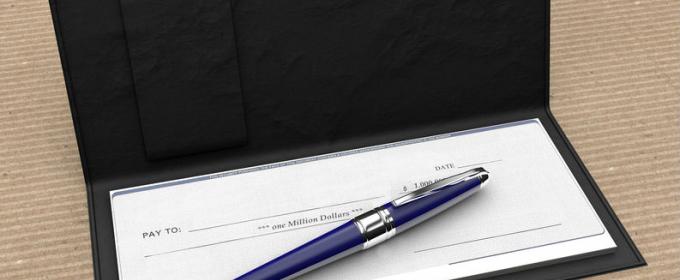Retail banking firms are frequently searching for cost effective methods to attract new account holders. Implementing a program that saves time for banks and for consumers could be a winning formula. Recent trends have revealed that several retail banking giants and other financial institutions are enabling consumers to establish a checking account without the issuance of a checkbook.
Banks Are Facilitating the Trend Towards Checkless Checking Accounts
Based on a recent survey, CitiBank was able to determine that the majority of the respondents preferred to perform banking transactions with a mobile device instead of writing a check. Due to the decline in check usage, CitiBank has announced its new Access Account. Consumers who decide to open an Access Account through CitiBank will not receive paper checks. To avoid a $10 monthly fee, an account holder must maintain an average daily balance of $1,500. Establishing direct deposit or other services might prevent an account holder from receiving certain monthly maintenance fees.
Bank of America offers a checkless checking account too. Safe Balance is a program from Bank of America that mirrors a personal checking account. However, account holders will not have traditional check writing privileges.
Chase and other banks have introduced prepaid cards for consumers who desire the ability to perform electronic payments versus completing a transaction with a paper check.
Benefits of a Checkless Checking Account
A checkless checking account may be easier to manage for some consumers. Typically, a paper check can take several days to clear. Meticulous ledger adjustments are usually required to avoid balance inaccuracies or overdraft fees. With a checkless checking account, consumers should have account information that is fairly accurate. Point-of-sale purchases, bill payments and other electronic transactions will generally be debited from a consumer’s checking account instantaneously.
Check Processing for Financial Institutions
While electronic banking has reduced some of the expenses that a bank incurs to process a check, many financial institutions maintain operation centers that are dedicated to check processing functions. If the checkless checking account trend continues, banks may be able to reduce some of their operating costs. As financial institutions realize greater profits, consumers may be presented with more convenient banking solutions.
Reduced Checking Account Fees for Consumers
Many banks offer free checks to new account holders. However, a large number of financial institutions will charge an account holder for personal checks. Purchasing 500 checks at some banks could cost an account holder more than $30. There is no need to pay for paper checks with a checkless checking account. Overdraft fees may be avoided too. Account holders who use a prepaid card or a bank-issued check card are generally limited to their available balance. Attempting to complete a purchase that exceeds an account holder’s available balance will likely result in a declined transaction. Without the costs of paper checks or overdraft fees, a consumer might save several hundred dollars per year.
Convenience of a Traditional Checking Account
A traditional checking account gives a consumer the ability to make an electronic payment or to write a paper check. Some consumers may prefer to send a paper check to their creditors instead of initiating an online bill payment transaction. A traditional checking account is ideal for consumers who enjoy the flexibility of manual payments or electronic payment methods. Certain accounting functions may be easier with a traditional bank account. Some financial institutions will process and return the original check to the account holder. Banks that retain an account holder’s paper check may include photocopies for processed items within a monthly statement or a quarterly statement. Most financial institutions offer check writing privileges for consumers who enjoy the convenience of a traditional checking account.
Advantages of Electronic Payment Methods
Typically, electronic payment methods are fast and reliable. Consumers can easily insert a check card or a prepaid card into their pocket. Portability becomes a strong feature as a checkbook or a lot of cash would require more carrying space than a check card. Safety is an important feature for account holders too. If a checkbook or cash gets stolen, an account holder might become vulnerable to certain losses. Losing a bank-issued check card that reflects a Visa or a MasterCard logo could reduce an account holder’s exposure to certain losses. Banks frequently combine their strengths with a major credit card issuer such as Visa or MasterCard. The alliance usually provides account holders with protection against unauthorized charges.
Environmental Impact of Checkless Checking Accounts
As banks continue to promote the advantages of a checkless checking account, consumers who participate may also be supportive of certain environmental initiatives. Knowing that fewer trees will be needed to facilitate the production of several million checkbooks could be a worthy incentive for some environmentally conscious consumers. Using electronic payments may also reduce the reliance on paper products such as dollars bills and money orders.
Considerations
Shopping trends reflect annual increases in online spending. While some online stores will accept a check for purchases, most merchants require an electronic payment method for web-based transactions. Paying for point-of-sale transactions with a prepaid card or a check card are usually faster than payments that are made with a personal check.
The trend toward checkless checking accounts might continue to grow in popularity as more consumers realize the increased speed, safety features and convenience of electronic payment methods.
Checkless checking accounts are ideal for mobile professionals, students and for travelers too. Inquiries for an account may be made through local financial institutions and regional banks as well.


